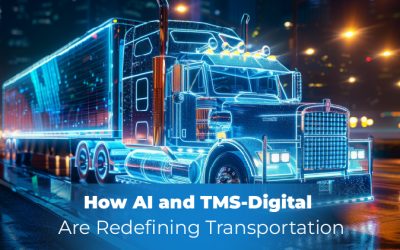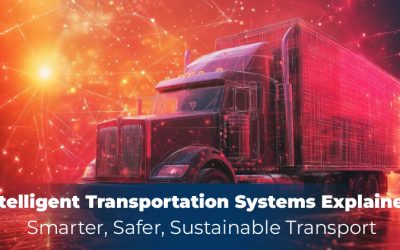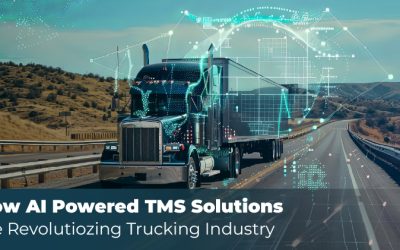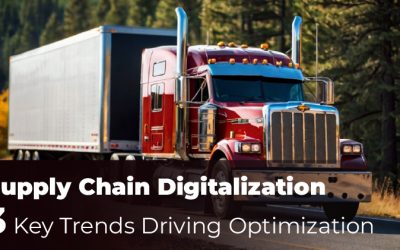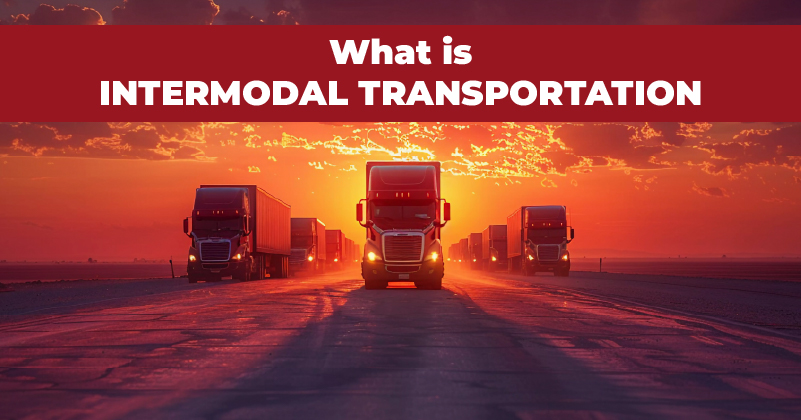
In the ever-evolving landscape of logistics and transportation, efficiency and sustainability are more crucial than ever. One of the most effective strategies to achieve these goals is through intermodal transportation. In this blog, we will explore what is intermodal transportation, how it works, its benefits, challenges, key players, and future trends.
Definition of Intermodal Transportation
Intermodal transportation involves the use of multiple modes of transportation—such as trucks, trains, ships, and sometimes aircraft—to move goods from origin to destination. The key differentiator is that this process uses standardized containers that are easily transferable between modes, ensuring minimal handling of the goods themselves.
Unlike multimodal transportation, where one carrier manages all modes under a single contract, intermodal transportation often involves multiple carriers and contracts, each responsible for a segment of the journey.
History and Evolution
Intermodal transportation has its roots in the early 20th century but gained significant traction post-World War II with the advent of containerization. The development of standardized shipping containers revolutionized the industry, enabling more efficient and secure transport of goods. Over the decades, technological advancements have further streamlined intermodal processes, making it a cornerstone of global trade and commerce.
How Intermodal Transportation Works
Intermodal transportation begins with goods being loaded into standardized containers. These containers are then transported by truck to a rail yard or port. From there, they may be loaded onto a train or ship, depending on the distance and destination. At the destination port or rail yard, the containers are transferred back to trucks for final delivery.
This system requires seamless coordination and efficient logistics to ensure that containers are transferred quickly and accurately between different modes of transportation.
Benefits of Intermodal Transportation
- Cost Efficiency: By combining the cost advantages of different transportation modes (e.g., the fuel efficiency of trains for long hauls and the flexibility of trucks for final delivery), intermodal transportation can reduce overall shipping costs.
- Environmental Impact and Sustainability: Trains and ships are generally more fuel-efficient than trucks, reducing greenhouse gas emissions. By integrating these modes, intermodal transportation supports greener logistics practices.
- Improved Safety and Reduced Risk of Cargo Damage: Standardized containers provide robust protection for goods, reducing the risk of damage during transit. Additionally, fewer cargo handlings lower the likelihood of theft and damage.
- Flexibility and Scalability: Intermodal transportation can easily adapt to varying shipment sizes and distances, making it an ideal solution for both small and large-scale logistics needs.
 Challenges and Limitations
Challenges and Limitations
- Infrastructure Requirements: Efficient intermodal transportation depends on well-developed infrastructure, including railways, ports, and transfer facilities. In regions where such infrastructure is lacking, intermodal transportation can be less viable.
- Coordination and Complexity of Logistics: Managing multiple carriers and ensuring timely transfers between modes requires sophisticated logistics management and precise coordination.
- Potential Delays and Handling Issues: Delays at transfer points can impact overall transit times. Additionally, any handling issues at these points can lead to cargo damage or loss.
- Regulatory and Compliance Challenges: Different transportation modes and regions may have varying regulations, adding another layer of complexity to intermodal logistics.
Key Players in Intermodal Transportation
- Major Intermodal Carriers and Logistics Companies: Companies like Maersk, Union Pacific Railroad, and J.B. Hunt are prominent players, providing extensive intermodal transportation services.
- Role of Ports, Railroads, and Trucking Companies: Each mode plays a crucial role in the intermodal chain. Ports facilitate the transfer between ships and other modes, railroads handle long-distance haulage, and trucking companies manage the initial pickup and final delivery.
- Technological Platforms and Software Solutions: Advanced TMS (Transportation Management Systems) like those offered by TMS-Digital are essential for managing the complexity of intermodal transportation. These platforms integrate data from various modes, optimizing routes, and ensuring efficient coordination.
Future Trends and Innovations
- Emerging Technologies: Innovations such as the Internet of Things (IoT), blockchain, and artificial intelligence (AI) are set to transform intermodal transportation. These technologies can enhance tracking, improve security, and optimize logistics.
- Trends Towards Greater Sustainability: As the logistics industry faces increasing pressure to reduce its environmental footprint, intermodal transportation will likely play a key role in developing more sustainable supply chains.
- Predictions for the Future: The future of intermodal transportation looks promising, with ongoing advancements in technology and infrastructure set to further improve efficiency, reduce costs, and minimize environmental impact.
Conclusion
Intermodal transportation is a vital component of modern logistics, offering numerous benefits in terms of cost efficiency, environmental sustainability, and safety. Despite its challenges, the continued evolution of technology and infrastructure promises to address these issues, paving the way for an even more efficient and sustainable future.
At TMS-Digital, we specialize in providing top-notch TMS software and services tailored to meet the needs of intermodal transportation. Our solutions are designed to streamline operations, enhance visibility, and optimize the logistics process, ensuring your cargo moves seamlessly from origin to destination.
Contact us today for a demo or consultation to see how our expertise can transform your intermodal transportation strategy. Visit our website, reach out via our contact page, or follow us on social media to stay updated on the latest in logistics technology.





